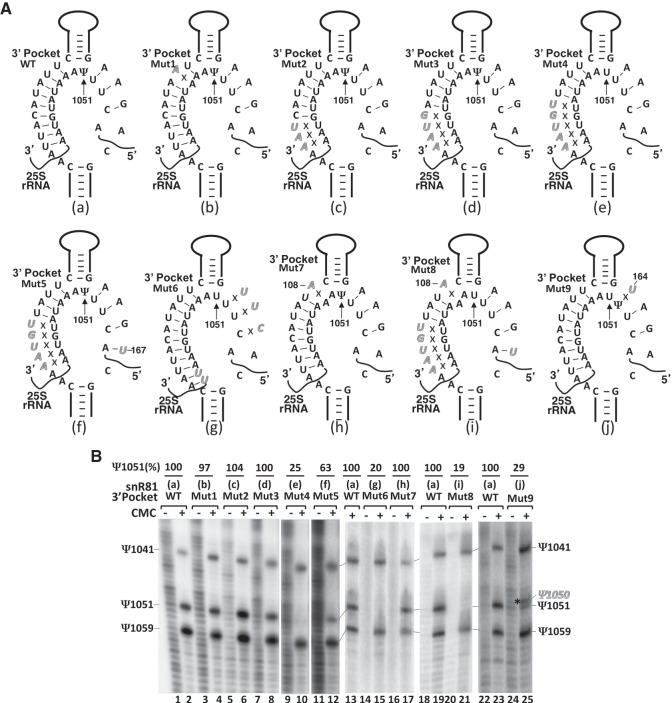FIGURE 5.
Effects of mutations of snR81 (within the 3′ pocket) on Ψ1051 formation within the 25S rRNA. (A) Schematic representations of the 3′ pocket of snR81 base-paired with 25S rRNA. Depicted are base-pairing interactions between the wild-type (a) or various mutant (b–j) 3′ pockets of snR81 and the wild-type 25S rRNA substrate sequence. Italicized letters represent mutated nucleotides. Crosses (Xs) indicate disrupted base-pairing interactions. (B) Detection of Ψs in yeast 25S rRNA using CMC-modification followed by primer-extension. Pseudouridylation of 25S rRNA was carried out in the context of wild-type (lanes 1 and 2, lane 13, lanes 18 and 19, and lanes 22 and 23) and various mutant (lanes 3–12,14–17,20,21,24,25) snR81 (illustrated in A, a–j). Signals corresponding to Ψ1041, Ψ1051 and Ψ1059 are indicated. The asterisk marks the shifted pseudouridylation band (Ψ1050). Ψ1051 formation was quantified using the formula Ψ1051/(Ψ1041 + Ψ1051 + Ψ1059). The mutants (mutant lanes) were then normalized to the wild-type control. The final pseudouridylation efficiency numbers (Ψ1051%) are shown at the top of each lane. The number shown at the top of lanes 24 and 25 reflects the efficiency of Ψ1050 formation (shifted band).

